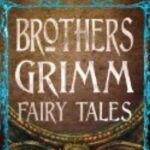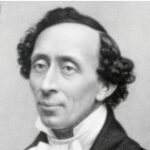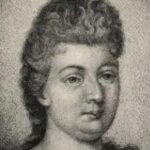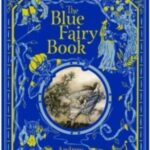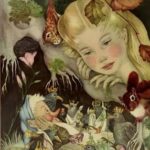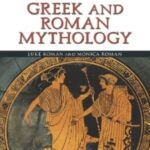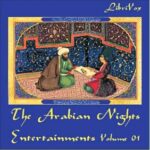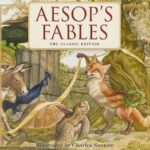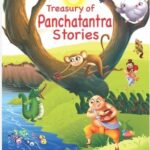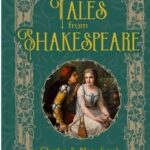Clicking on the following links or images will take you to the fairy tale & folklore book collections covered in this section:.
Commentary:
Mythical tales and folklore have been around ever since the dawn of human civilization. They were originally communicated orally and later propagated via handwritten manuscripts; however, until the introduction of the printed press they were mostly confined to a local region and a small segment of the population. Once the stories started to be printed and translated into various languages, they reached a much larger number of people and many of them gained worldwide popularity.
Among the oldest and best-known tales are those from Greek and Roman mythology. Many ideas and characters in these stories have permeated popular culture and indeed language itself. Although the stories date as far back as the 18th century BC, they were popularized in the English-speaking world only a few hundred years ago. The links I have provided in my lists are for the versions of these stories from more modern English sources such as Bulfinch’s Mythology (by Thomas Bulfinch) and Children of the Dawn (by Elsie F. Buckley), since these are much easier to read than the original sources.
Representing another category of folklore from ancient times are fables (pithy stories with a moral) which have been popular for millennia in both the East and West. In the East the fables are found in the Panchatantra, while in the West we have Aesop’s Fables, which are attributed to a slave and storyteller who lived in Ancient Greece. Both sets of tales go back at least several hundred years BC, and there is a lot of similarity in many of the stories, perhaps indicating a common source going back even further in time. As in the case of Greek mythology, I have selected more modern sources for both sets of fables, since they are in simple English and more suitable for younger readers.
Another ancient source of folklore is the Arabian Nights (also known as 1,001 Nights), a collection of Arabic tales with a framing storyline which were created a long time ago. (The earliest recorded fragments of the stories go back to at least the ninth century AD.) The Arabian Nights stories were first popularized in the Western world by Antoine Gallard in a series of books written in French and published in the early 18th century. More than a century and a half later (in 1885), Richard F. Burton published a 10-volume series of books in English called The Book of the Thousand Nights and a Night, which is the source of the stories I have linked in my lists.
A different genre of folklore from mythology and fables is represented by fairy tales. These kinds of folk stories are relatively more recent, and in the late seventeenth century several authors started to collect and adapt them into a form that was suitable for children and enjoyable by adults as well. The first of these was Charles Perrault, who laid the foundation for this new literary genre with his groundbreaking book Histoires ou Contes du Temps Passé (‘Stories or Tales from Past Times’), published in 1697. Many of his famous tales such as Cinderella, Sleeping Beauty and Little Red Riding Hood were reworked by the Brothers Grimm and are often wrongly attributed to the latter, even though Perrault wrote his stories more than a century earlier. Another French writer Madame d’Aulnoy (also known as Countess d’Aulnoy) was a contemporary of Charles Perrault and, like him, was one of the original practitioners of the art of writing fairy tales. In fact, it was she who coined the term ‘fairy tale’ by naming her first story collection Les Contes des Fées (‘Fairy Tales’). Just like the stories of Charles Perrault, Madame d’Aulnoy’s fairy tales are also of very high quality and thoroughly enjoyable.
Of all the fairy-tale writers, none are more famous than the German brothers Jacob and Wilhelm Grimm, known as the Brothers Grimm. Their first collection, Children’s and Household Tales, was published in German in 1812. They kept revising and adding to the collection over the next 45 years, until the final edition in 1857. Altogether, there are over 200 fairy tales in their collection. Although many of their stories are not original, they are written in an easy-to-understand, popular style and have been beloved by children the world over for over two centuries since the time they were first published. Another very popular fairy-tale writer is Hans Christian Andersen who is as well known as the Brothers Grimm. His stories are written in an easy-to-understand and engaging manner, and their worldwide popularity have made him a legendary figure in his native country of Denmark. He published his first collection in 1835 and kept and kept adding more stories for nearly 40 years until his final collection published in 1872.
Besides the authors listed above, there have been many other writers of popular fairy tales who are not as well-known or whose oeuvre includes just a few well-known stories. Among the stories from these other sources are The Three Little Pigs, Beauty and the Beast, Goldilocks and the Three Bears, and The Pied Piper of Hamelin, as well as the very first fairy tale printed in English: Tom Thumb. Many of these fairy tales were collected in Andrew Lang’s Fairy Books, which are comprised of several volumes of folklore and mythology.
Finally, the plays of William Shakespeare are among the most interesting and fascinating stories ever told. However, they contain a lot of complex language and philosophy which are not well suited for children (or even for many adults). Fortunately, we have an alternative way to enjoy them in Tales from Shakespeare, written by the brother-sister team of Charles and Mary Lamb and published in 1807, nearly 200 years after Shakespeare’s death. This selection of 20 stories from Shakespeare is written in easy-to-read prose suitable for children, while remaining faithful to the original Shakespearean plays and containing many direct quotations from the plays.

